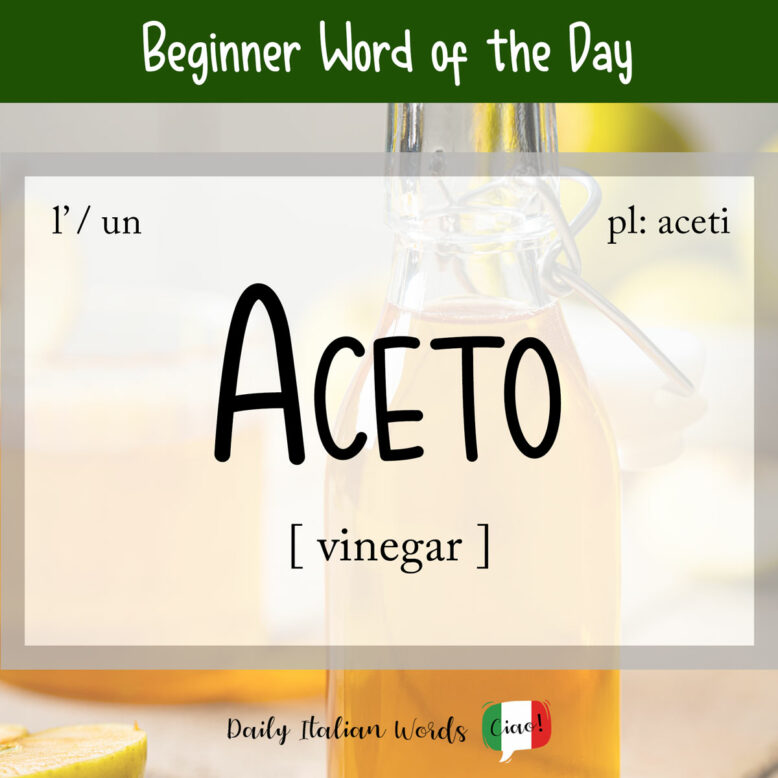Vinegar, or aceto as it is known in Italian, has a surprisingly wide variety of industrial and domestic uses due to its mild acidity (acidità).

It is a common ingredient in cooking and is also popular as a natural household cleaner (detergente).
Spesso uso l’aceto per pulire il lavandino.
I often use vinegar to clean the sink.
The different kinds of aceto you will find in Italy include:
- aceto di malto = malt vinegar (made by malting barley)
- aceto di vino = wine vinegar (made from red or white wine, the most commonly used vinegar in Southern and Central Europe)
- aceto di mele = apple cider vinegar (made from cider or apple must)
- aceto bianco = distilled vinegar or white vinegar (produced by fermentation of distilled alcohol)
- aceto balsamico = balsamic vinegar (a dark, concentrated, and intensely flavoured vinegar originating in Italy made from grape must)
If a fruit or vegetable is sottoaceto (pickled), it has been preserved in vinegar. The expression mettere sottaceto means to pickle.
Ho messo sottaceto dei cetrioli.
I’ve pickled some cucumbers.
Aceto can be used in a figurative way to describe something sarcastic: l’aceto della satira means the sarcasm of satire.
A Tuscan proverb you may have come across is Con la forza non si fa neanche l’aceto which literally translates into English as With force you can’t even make vinegar. It is a play on the use of the word forza (strength, force) and vinegar whose taste can be described as forte (strong).
The actual translation is close to the English proverb You can lead a horse to water but you can’t make it drink – or in other words, you cannot force someone to do something against his or her will.
Heather Broster is a graduate with honours in linguistics from the University of Western Ontario. She is an aspiring polyglot, proficient in English and Italian, as well as Japanese, Welsh, and French to varying degrees of fluency. Originally from Toronto, Heather has resided in various countries, notably Italy for a period of six years. Her primary focus lies in the fields of language acquisition, education, and bilingual instruction.


